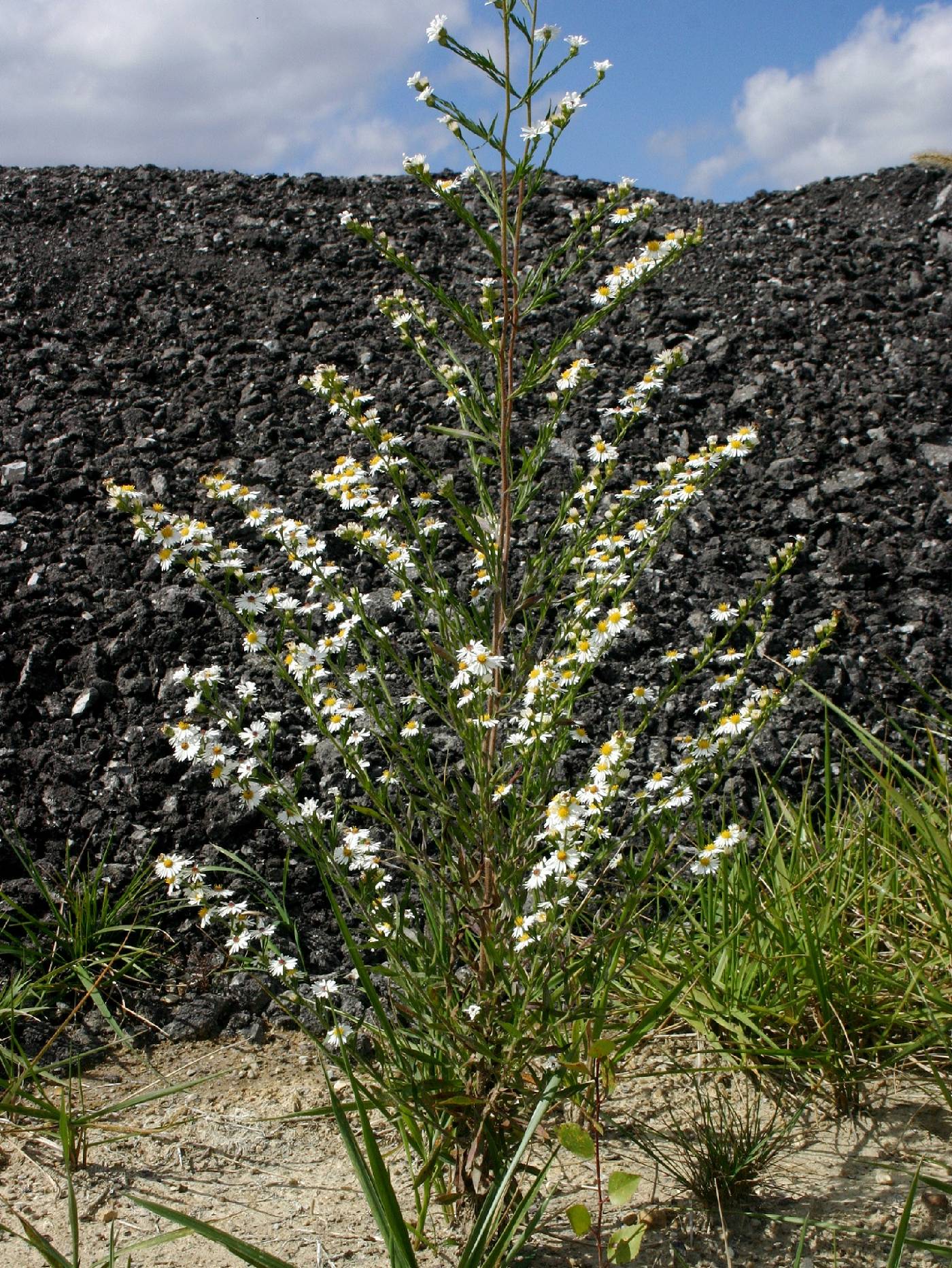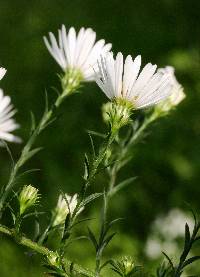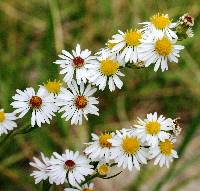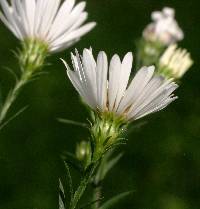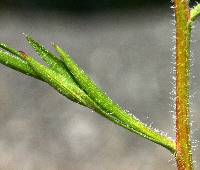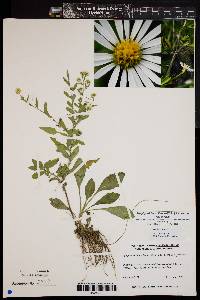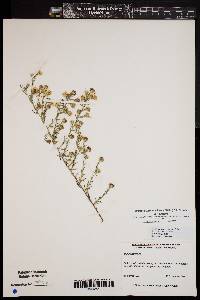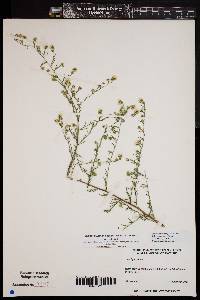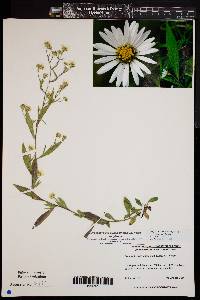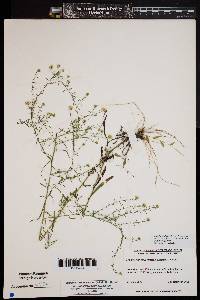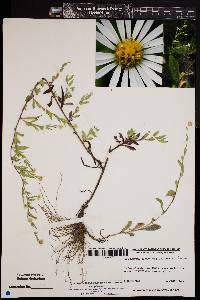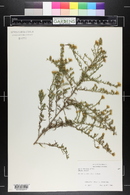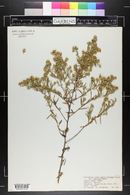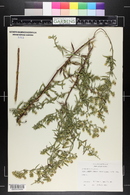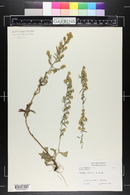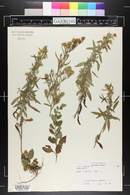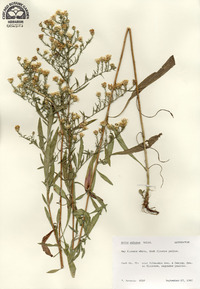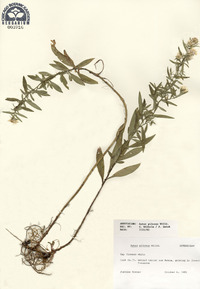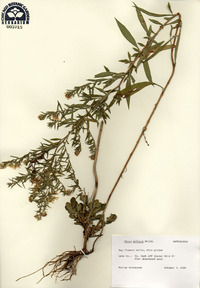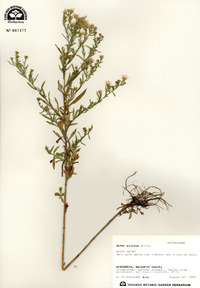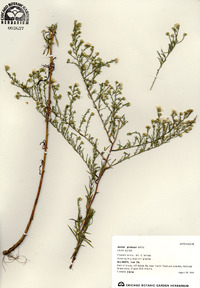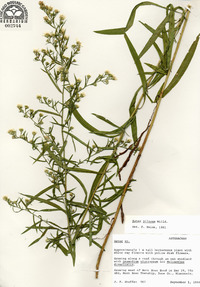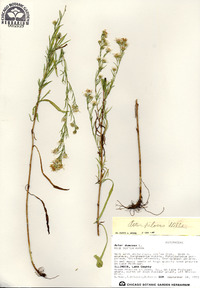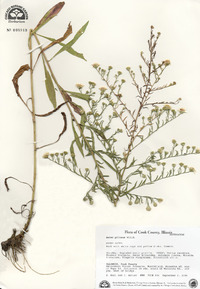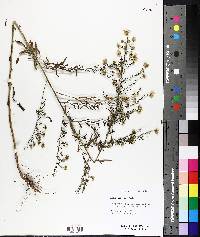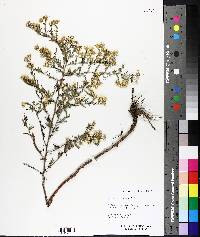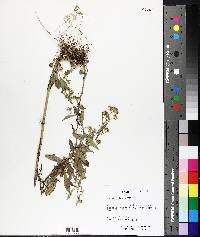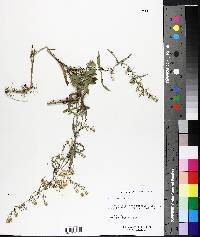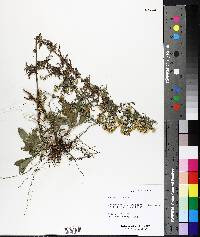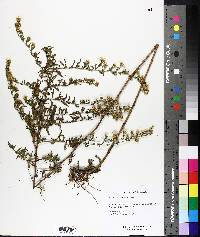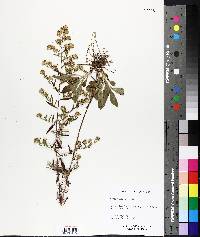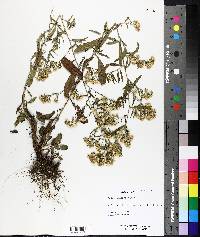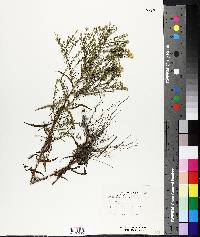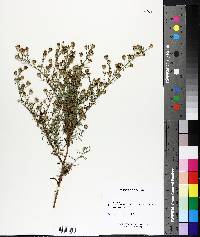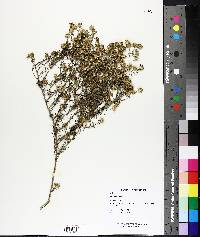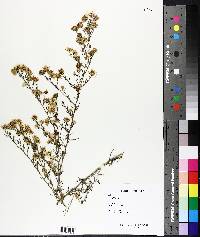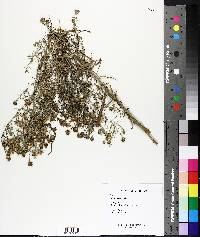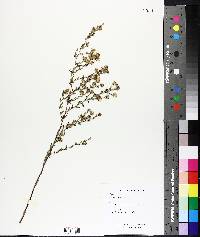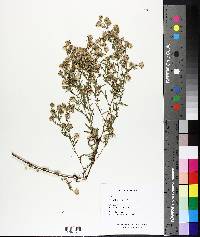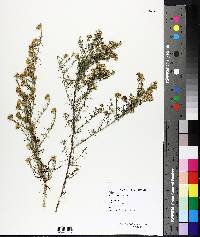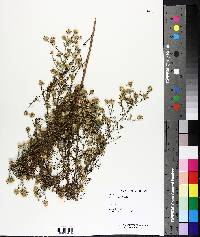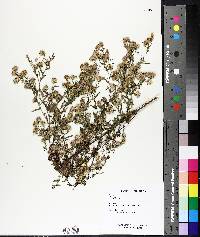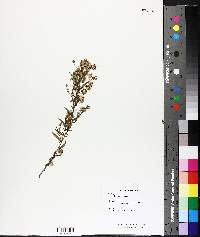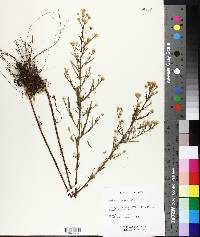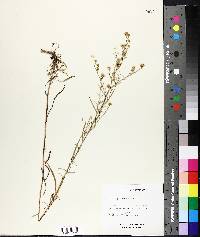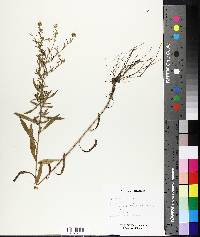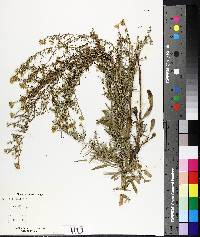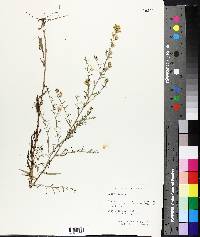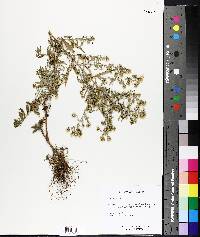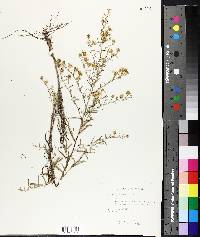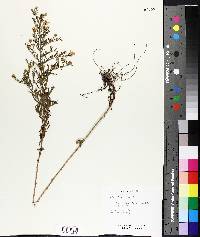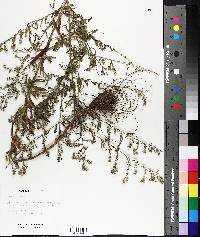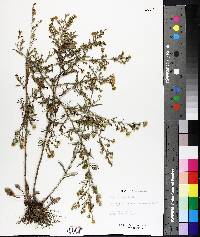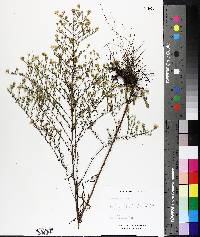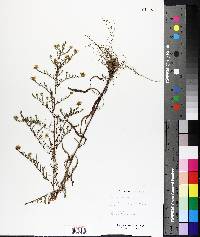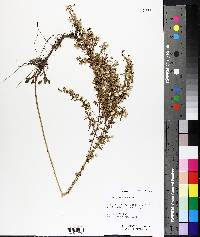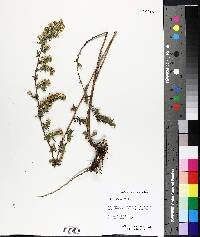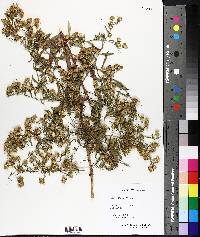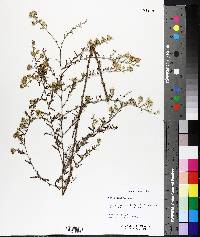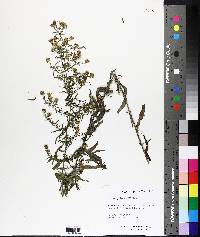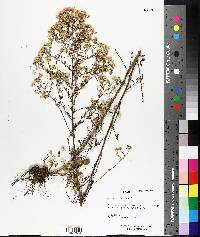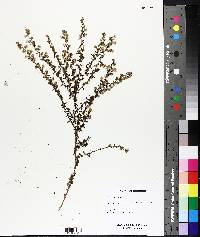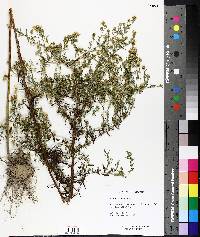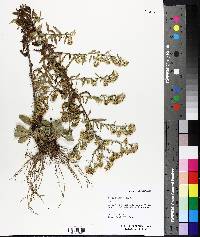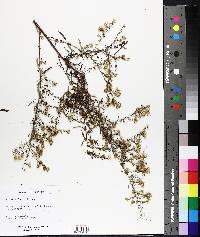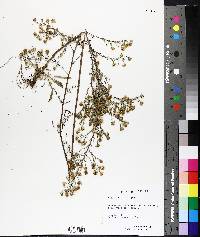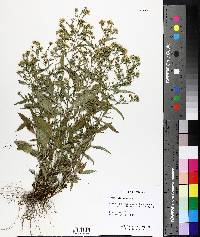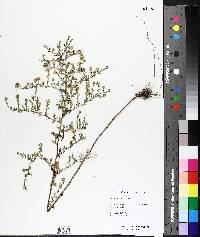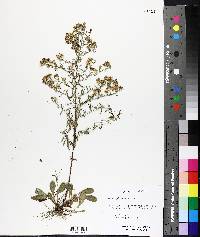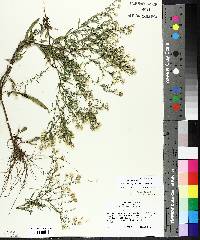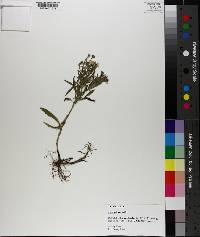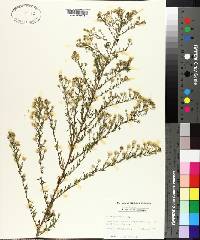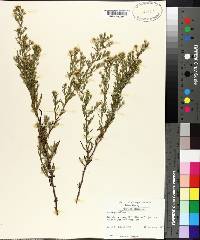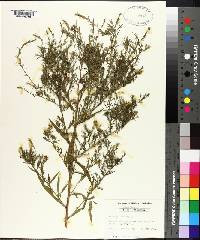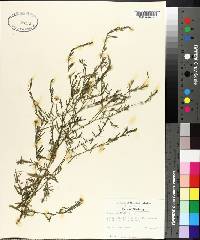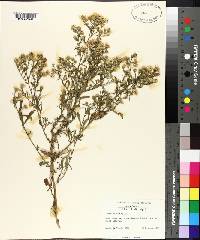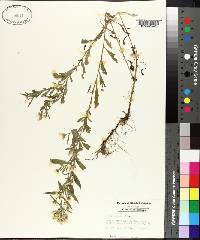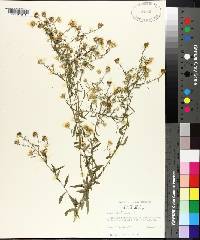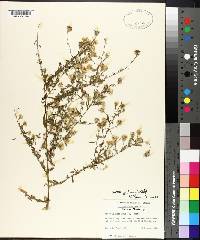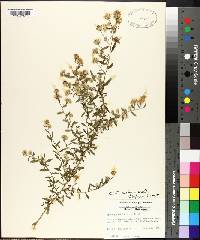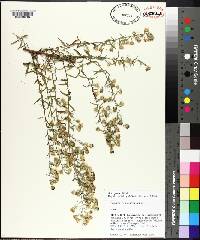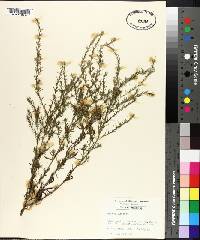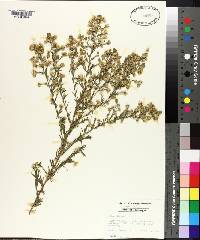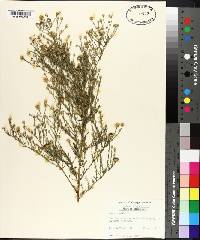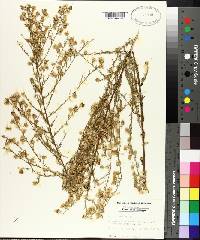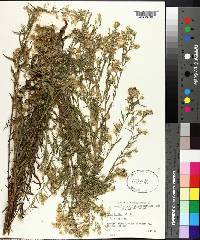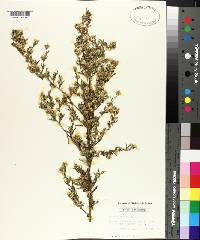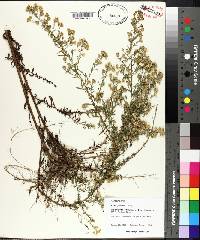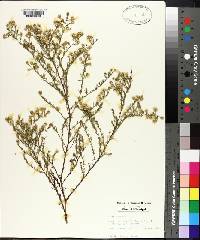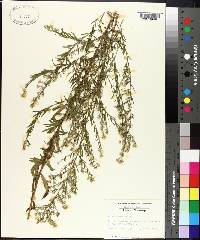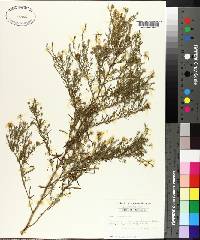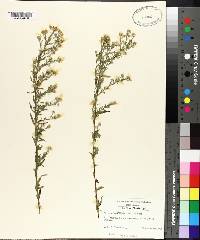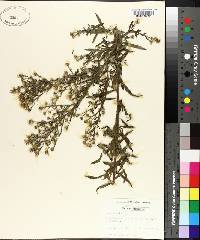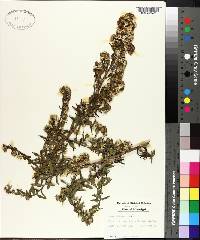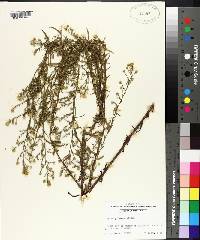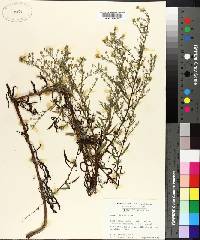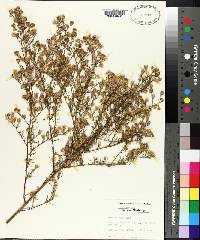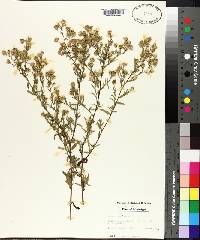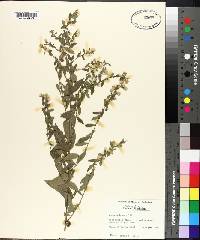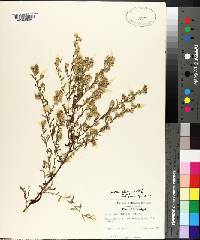Symphyotrichum pilosum
|
|
|
|
Family: Asteraceae
White Oldfield American-Aster, more...hairy white oldfield aster
[Aster pilosus Willd., moreAster pilosus pilosus , Aster pilosus subsp. pilosus var. pilosus , Aster pinifolius] |
Perennials cespitose, (5-)20-120(-150+) cm; with stout, branched caudices, sometimes long-rhizomatous. Stems 1-5+, ascending to erect (straight, stout), glabrate to hirsuto-hispid or pilose, sometimes glabrous or hairy in lines (var. pringlei). Leaves thin, margins ciliate, apices acute to acuminate, mucronate, faces glabrous or ± hirsute (particularly on abaxial midveins); basal withering by flowering (new vernal rosettes developing at flowering), petiolate to subpetiolate (petioles winged, ciliate, bases sheathing), blades oblanceolate or obovate to spatulate, 10-60 × 5-15 mm, bases attenuate, margins sparsely crenate-serrate (mostly apically), apices obtuse to rounded; proximal cauline usually deciduous at flowering (often with axillary clusters of small leaves), petiolate or subpetiolate to subsessile (petioles narrowly to broadly winged, clasping), blades elliptic-oblanceolate or -oblong to linear-lanceolate or -oblanceolate, 40-102 × 5-25 mm, progressively reduced distally, bases attenuate to cuneate, ± clasping, margins entire to serrate, softly ciliate, apices attenuate, hyaline-spinulose; distal sessile, blades lance-oblong to linear-lanceolate to linear or linear-oblanceolate or linear-subulate, 10-100 × 1-8 mm, progressively reduced distally, branch leaves abruptly smaller, bases cuneate, margins entire or serrulate. Heads in open, leafy, often pyramidal, paniculiform arrays, branches divaricate or branches 10 cm or less ascending, often arched and secund, sometimes racemiform. Peduncles 5-30(-50) mm, progressively shorter distally, glabrous or densely hispid, bracts 7-25+, appressed to ascending, sometimes ± spreading, linear to subulate, glabrate, ciliate or not, mucronate to apiculate, ± grading into phyllaries. Involucres campanulate to cylindro-campanulate, (2.5-)3.5-5.1(-6.5) mm. Phyllaries in 4-6 series, appressed or slightly spreading, oblong-lanceolate (outer) to linear (innermost) , unequal (rarely subequal), bases indurate 1 / 2 - 3 / 5 , margins hyaline, scarious, erose, ± ciliolate distally, green zones lanceolate to lance-rhombic, apices acute or acuminate, involute, spinulose, faces glabrous or sparsely hirsutulous. Ray florets (10-)16-28(-38); corollas usually white, rarely pinkish or bluish, laminae (4-)5.4-7.5(-11) × (0.4-)0.8-1.3(-1.7) mm. Disc florets (13-)17-39(-67); corollas light yellow becoming reddish purple or brown, (2.5-)3-4. The ecology and cytogeography of Symphyotrichum pilosum were summarized by J. G. Chmielewski and J. C. Semple (2001b). The species is often confused with S. ericoides, which inhabits the same kinds of open, prairie-like habitats; the latter can be distinguished by its smaller heads and spine-tipped phyllary apices. Because of that, the name Aster ericoides has been misapplied often in floras and in the horticultural trade.
Stems 1-15 dm from a stout caudex; basal and lower cauline lvs soon deciduous, or the basal persistent, oblanceolate, and petiolate, those above sessile or nearly so, entire or slightly toothed, linear to lance-elliptic, seldom over 10 נ1(-2) cm, the upper and rameal ones numerous and reduced, often subulate; heads in an often diffuse infl, sometimes secund on the branches, their copiously subulate-bracteate to nearly naked peduncles 3-40 mm; invol broadly urn-shaped, constricted above the middle, then flaring, glabrous, 3.5-8 mm, its bracts imbricate or subequal, with loose, subulate, marginally inrolled green tip; heads mostly 40-100-fld, the rays 16-35, 5-10 mm; 2n mostly = 32, 48. Open, rather dry places, often in sandy soil; common and widespread from Me. and N.S. to Ga. and nw. Fla., w. to se. Minn., Neb., Kans., and La. Three vars. Gleason, Henry A. & Cronquist, Arthur J. 1991. Manual of vascular plants of northeastern United States and adjacent Canada. lxxv + 910 pp. ©The New York Botanical Garden. All rights reserved. Used by permission. |

